Astrophotographer Rey Hernandez Made an Astonishing 54 Hour Photo
All images by Rey Hernandez. Used with permission.
“I can’t tell what [is] my limit, there [are] just so many targets and each yields [a] different outcome the more time you put into it.”, says Rey Hernandez, who currently has reached 54 hours of exposure time on a night sky photo. He hopes to hit a 100 hours exposure someday to photograph more amazing constellations in our night sky.
Deep-sky photography is something that requires tremendous patience, and Rey has (literally) put in hundreds of hours of it over many years. The calculative process behind the focusing and precision positioning makes it one of the most rewarding types of long exposure photography. Rey’s approach to this is unique, with his multi telescope and multiple zoom lens rigs providing some spectacular results. A migrant to the USA at the age of 18, he hopes to someday retire with all his gear to his native Philippines and teach school kids how to experience viewing galaxies.
Want to have your work featured? Here’s how to submit your photos to us.
The Phoblographer: Give us an intro to how you got into photography and especially deep-sky photography
Rey Hernandez: It started back 1986 when I first got my SLR camera and bought my first Tasco long tube refractor. Back then I first saw the rings of Saturn and got so excited and found a way to connect my SLR and snap my first astro photo. Unfortunately I lost that picture and until now I am still hoping I will find it.
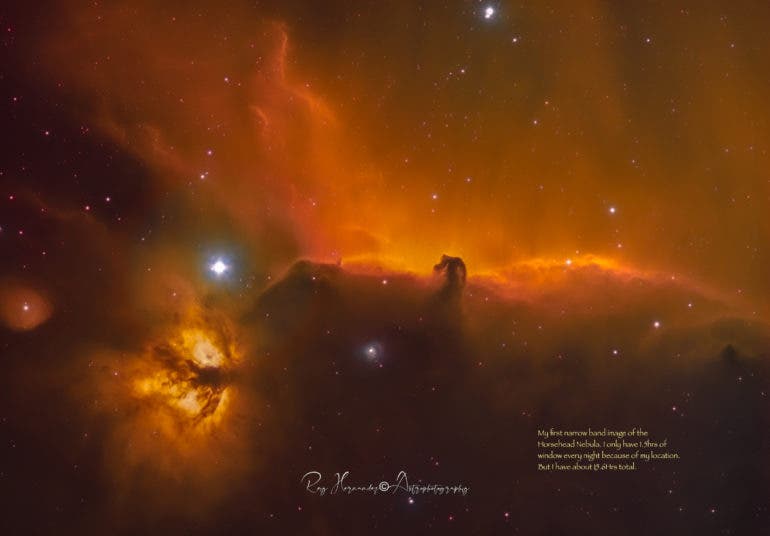
The Phoblographer: Can you break down the gear you use for this? This will be a section in and of itself. Please tell us how it helps you achieve your creative vision
Rey Hernandez: Well, in astrophotography there is no such thing as one size fits all and one must have a high focal length scope and a wide to medium scope. Time is what we need but I feel it is also my main enemy since my backyard has so many trees and only 45 degrees sky visibility all around. This starts my quest on how to overcome this situation without driving to a remote location. The main question is, how to get more data with such a short window. I thought about cutting few trees but then it will cost as much as a new scope. So I ask myself, how about build a tri-scope so this way I capture data 3x faster? Of course, so much research has been done, thought about buying a fast scope but I choose to add to my existing single setup. So, the tri-scope was the final decision and I saved the trees. 🙂
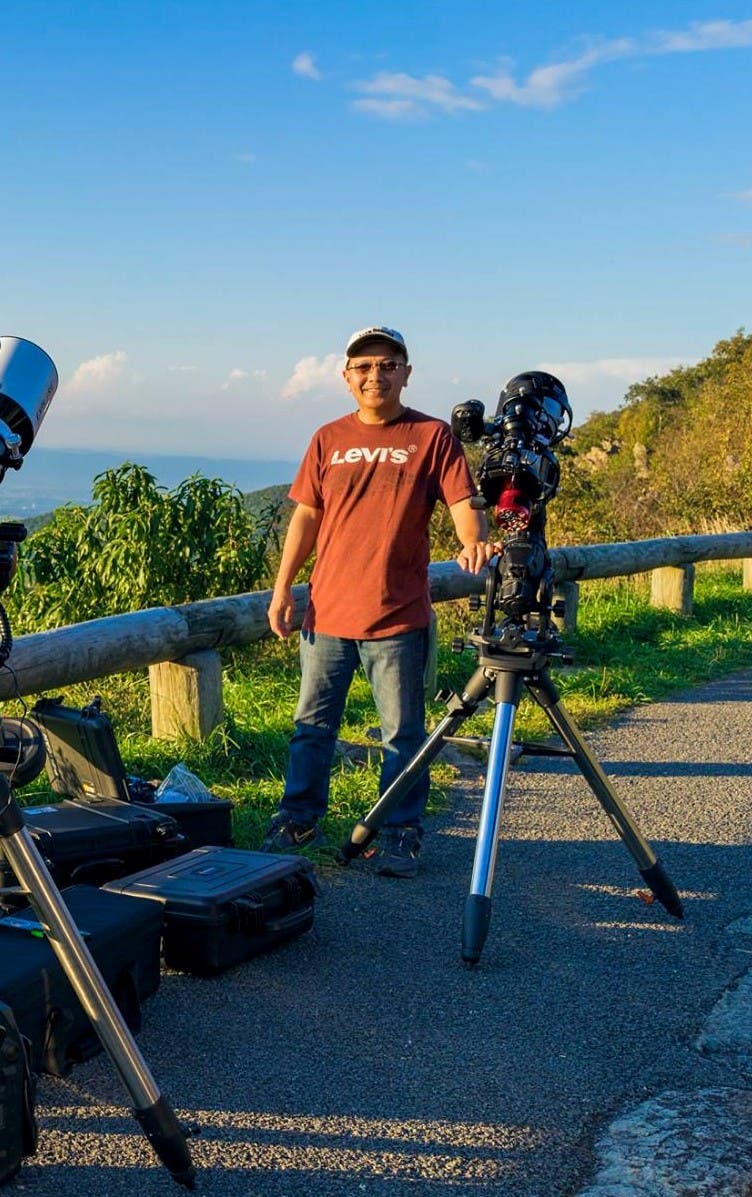
The Phoblographer: 54 hours is an incredibly long time, even if you break up the exposure into smaller segments. How do you accurately track the celestial body across such a long period of time, and over so many nights?
Rey Hernandez: Since I have 3 scopes, a 2hr imaging session will be like 6hrs of data. So 54Hrs of data is only about 18hrs of imaging time. Depending on the target like M31 (Andromeda Galaxy) I only have 3 hrs per night of window to image so it took me about 6 nights to acquire 54 Hrs.
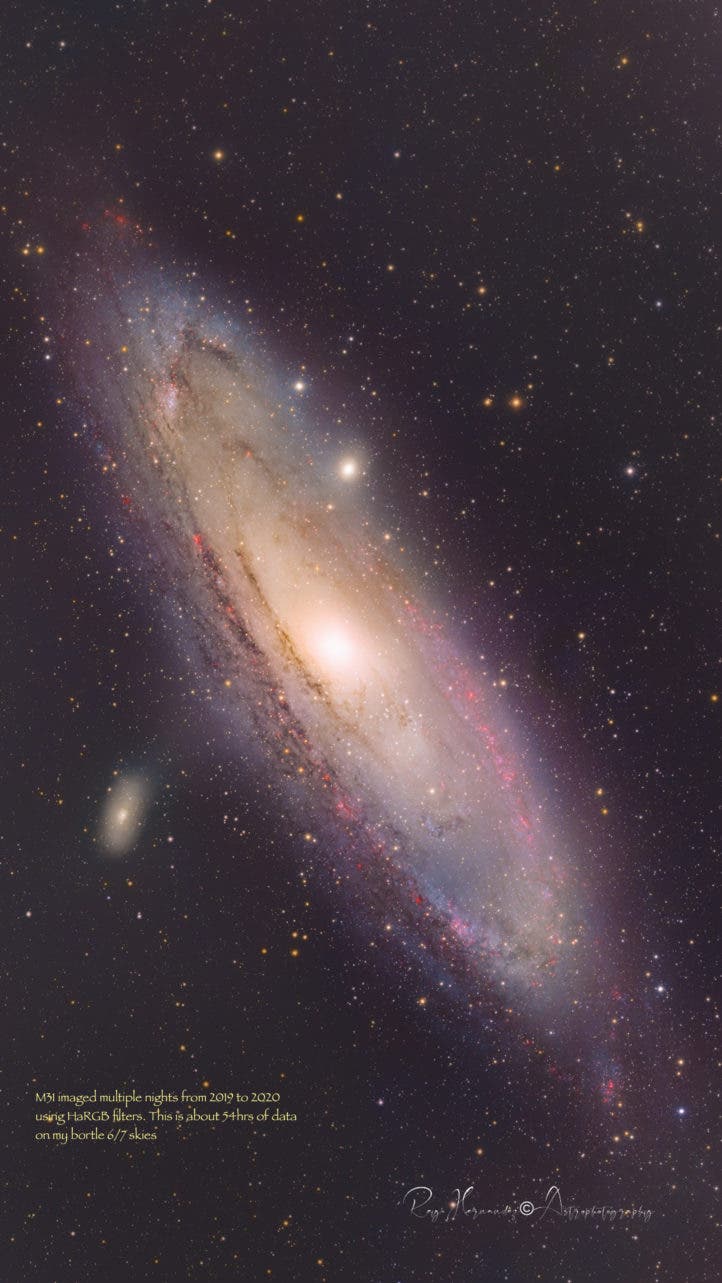
The Phoblographer: What are the software and smartphone apps that you use in your planning?
Rey Hernandez: I use telescopious.com as my planner, I am also a patreon there. This site will tell me what target to choose and what elevation at a particular time.This will also show the field of view of the image so I will know how it looks before even I start. I list my plan before dark. I also use Skysafari to quickly search an object if it is above horizon and also shows me how bright the moon is and what elevation.
The Phoblographer: Your Flickr profile has some images of your astro rig consisting of multiple telescopes and/or lenses pointing in the same direction. Can you explain this setup to our readers?
Rey Hernandez: Yes, the Tri-scopes are all pointed to the same FOV match as close as possible. This gives me the ability to eliminate filter wheels, I can put R/G/B filter on each and this will function as a full-resolution color camera without a Bayer matrix. I can switch to narrowband filter SII/Ha/OIII [Sulphur II / Hydrogen Alpha / Oxygen III] and it can function as a One-Shot narrow band camera. The middle scope is fixed and cannot be adjusted, I use this as a reference. The other two on the side sit on an Alt/Az saddle where I can adjust how I point to the sky by 10 degrees movement enabling me to also capture 3 areas separately at the same time, which can be used for mosaic wide shots.
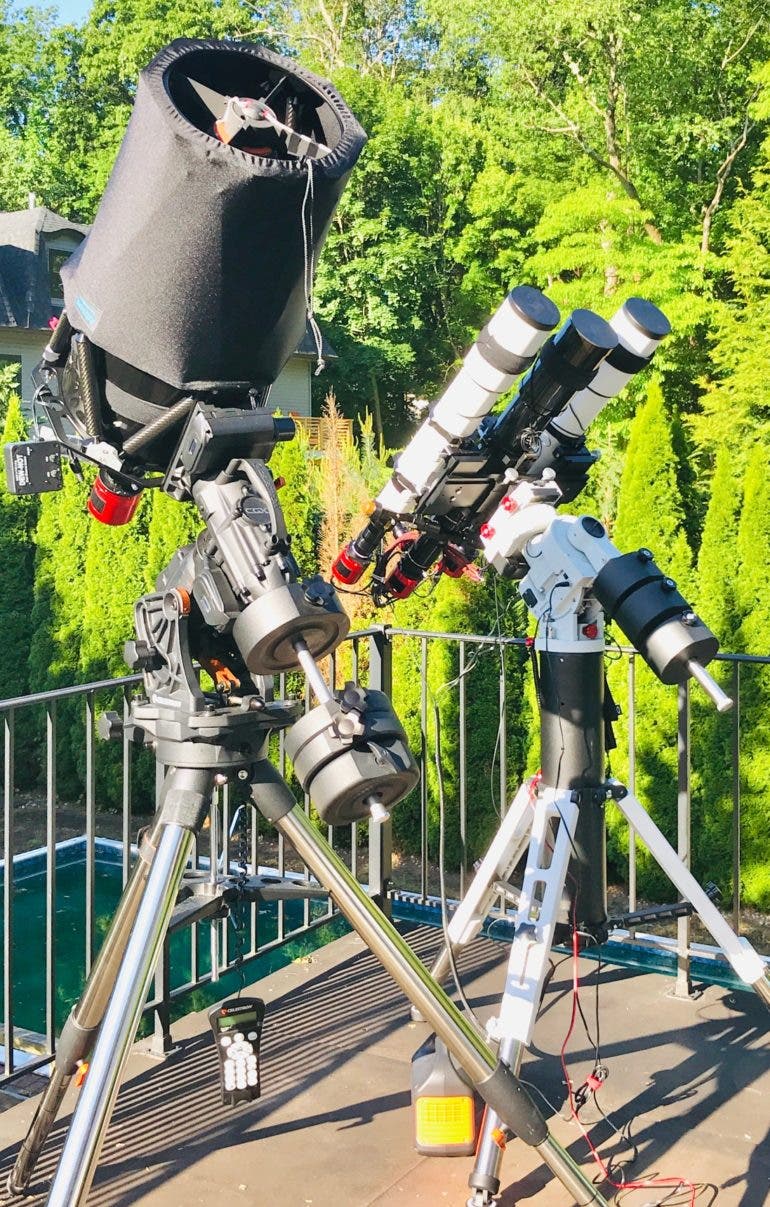
The Phoblographer: Aside from the obvious reason for preventing star trails, what are other advantages of layering multiple long exposures over each other?
Rey Hernandez: Star trails mostly depends on how good the mount is. On a less windy and good seeing nights, I can do 15 to 20 min single exposure, this is desirable if you don’t have a powerful computer to stack hundreds of images. But one airplane pass can ruin one good image and most of all the time you cannot get back. Stacking multiple exposures will bring back lost dynamic range and the more you stack the less the noise and most of all the fainter dust clouds starts to appear.
The Phoblographer: What are the technical challenges faced when trying to do such a photograph (hot spots, noise etc.)? Does this kind of photography end up decreasing the sensor’s overall life?
Rey Hernandez: Every night is different, you can have a good night and some bad ones when the mount just can’t track due to poor seeing and you are force to take shorter exposures. When I was beginning this hobby, I [used to] publish an image and don’t care about noise because of the excitement, this habit will [changed] over time where I no longer publish[ed] until I get a good image with less noise so I just collect data and store it for later use. My minimum is 15hrs of data.
The Phoblographer: Most people start out shooting the Andromeda constellation. Are some stars and constellations easier to photograph than others? If so, please explain why
Rey Hernandez: Andromeda is famous for beginners, not only [because] it is the most beautiful galaxy and it is big enough to image. Orion on the other hand is also famous but harder to process because the dynamic range is so high you can overexpose the core easily. During a bright moon, most of us take the image of it while others use this bright night to calibrate, re-adjust polar alignment, test guiding and take images of globular star clusters.
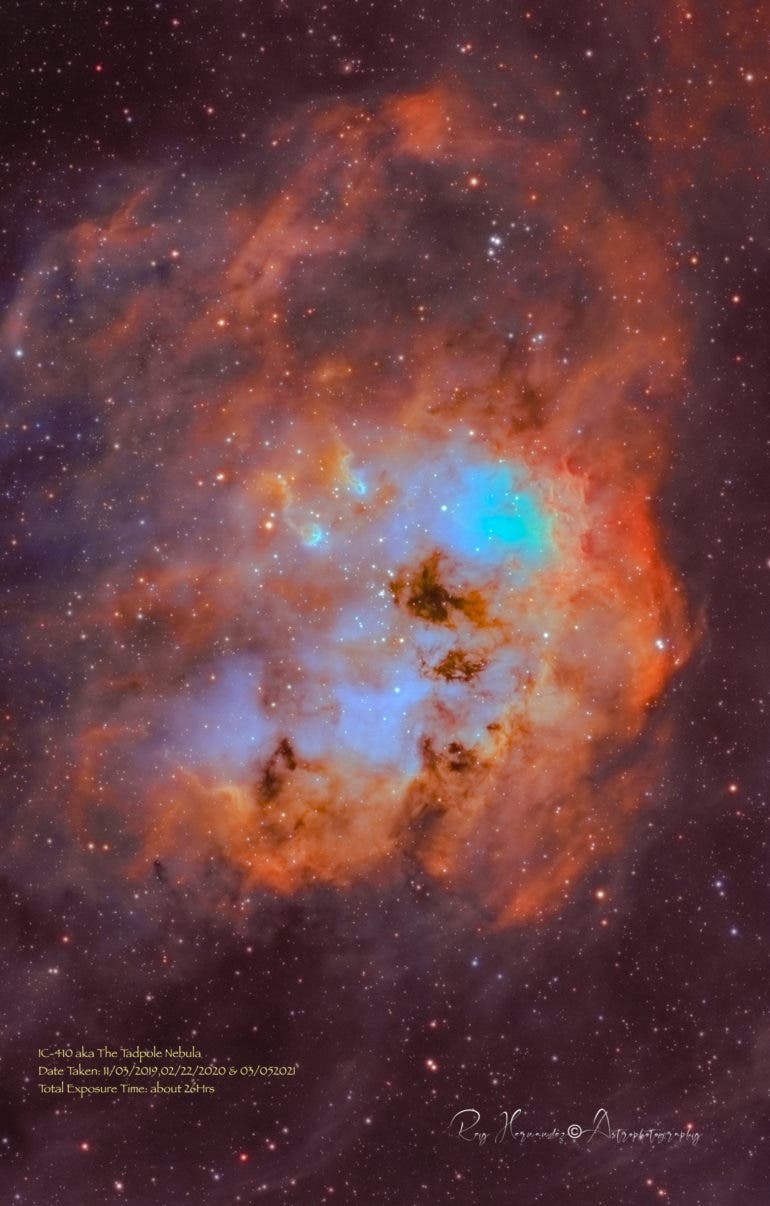
The Phoblographer: The sky is literally the limit here, but what would you say is the longest exposure time you’re aiming to reach someday? What would you have to change from your current setup to do this?
Rey Hernandez: I can’t tell what [is] my limit, there [are] just so many targets and each yields [a] different outcome the more time you put into it. But if you must ask, I like to have a minimum of 100hrs on each subject. Of course this will change when I retire to a dark location. A 100hrs on my current location can only be achieved with 10hrs on a dark location.

The Phoblographer: Does your home town have dark skies that offer you the convenience of shooting in your backyard?
Rey Hernandez: I live on a Bortle 6/7 sky, moderate light pollution but if subject elevation is high it probably compares to around Bortle 5 near zenith.
The Phoblographer: Do you also head out to some far-flung spots for these images and how do you manage the demands of power supply and battery at these places?
Rey Hernandez: Couple of times I went out but the setup time and hassle is not really worth it, transporting equipment is for me not a good idea. Power is a major problem, I did built a 100Ah marine battery power supply but that is about 75lbs of weight alone. The main battery killers are the dew heaters. This is a necessity and will drain the battery in no time.
The Phoblographer: I’ve seen some really detailed images of the sun in your portfolio. Can you tell us how you shot some of those, and if you’ve ever damaged a sensor trying this?
Rey Hernandez: I just started taking solar images and acquiring new equipment to be able to do close up timelapse of the active regions. The full disc photo of the sun was taken by a Lunt LsTHa60DS H-alpha dual stacked telescope. This is a special scope just for imaging the sun. The sensor is safe, since most harmful rays are already blocked by two etalon filters, it is safe to view it using an eyepiece.

The Phoblographer: With reference to sensors, are there some camera models that would work better for astrophotography than others? Can smaller APS-C cameras also achieve such results (maybe adding on accessories like sensor coolers, or with IR modifications to sensors)?
Rey Hernandez: IMO, this is the biggest mistake for a beginning astrophotographer. APS-C cameras are just not sensitive enough and most will ditch the idea when they find out they reached the limit of its use. Dedicated astro cameras are made for a reason, it is the right tool for the job. A lot of people sell the modified camera and buy a dedicated astro camera so why would someone modify and ruin a perfectly good camera for what it was made for when the benefit is very small.
The Phoblographer: Years ago when I attempted to shoot the Milky Way, I would just bump up the saturation and highlights while pulling down the shadows in post-processing. I assume it’s not so straightforward editing your images though. What steps do you go through for this?
Rey Hernandez: This is a neverending learning experience. I use Pixinsight for processing. There are hundreds of ways to process. My top level processes are 1. calibrate the images to remove dust blobs and vignetting, 2. Star align them, 3. Stack them into one master image, 4. Combine all three master images to make one color image, 5. Neutralize the backgound, 6. Align the colors and 7. Remove the green cast. From here, I have one final RAW image. I can add Ha data if needed but this is where process varies per person to person.
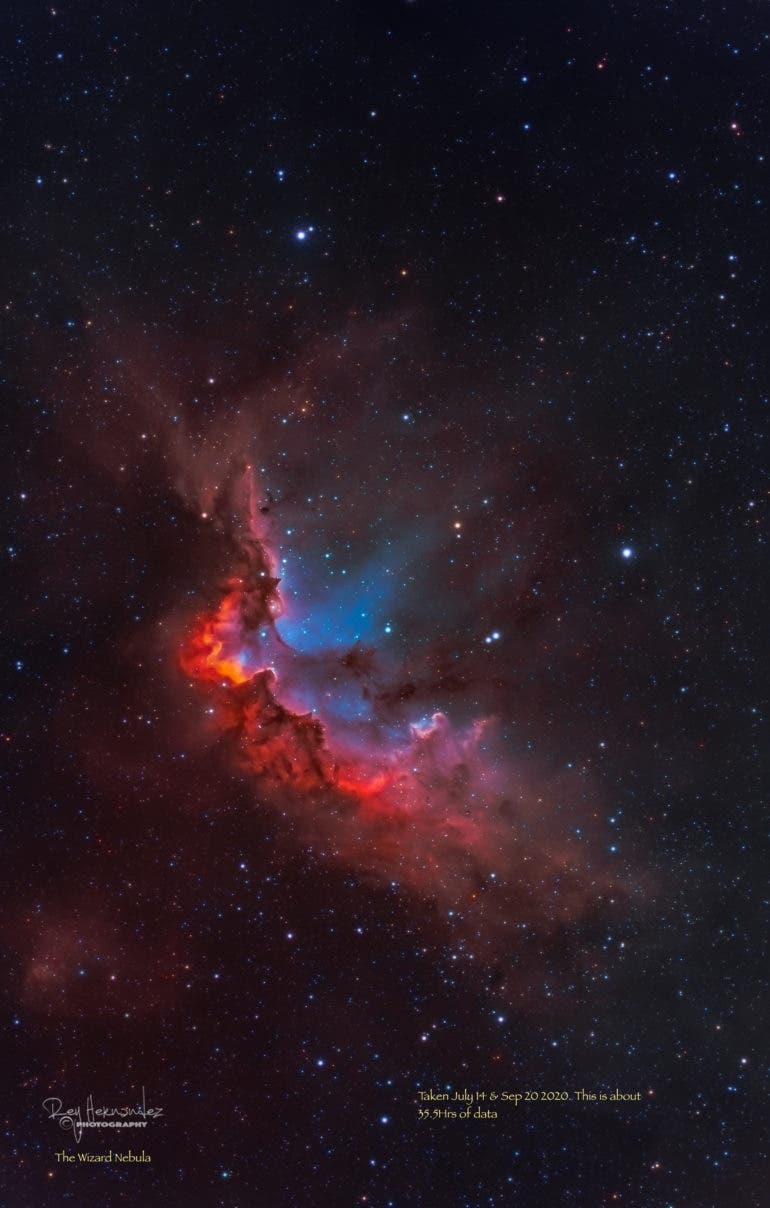
The Phoblographer: From an astronomic perspective, do the different colours in the images indicate things like varying distances / different gaseous compositions of the constellations?
Rey Hernandez: Each cast of colors usually represents gasses, some will just color it differently but the most common is Red for H-Alpha, Yellow for Sulfur, and Blue for OIII(Oxygen).
The Phoblographer: Have your enchanting images changed the perception of how your friends and acquaintances see the night sky?
Rey Hernandez: My circle of friends usually never seen these images or even into it. But seeing these images taken from a backyard did change have an impact. They always thought only NASA hubble telescope can only take these kind of images.
All images by Rey Hernandez. Used with permission. Visit his YouTube Channel and his Facebook page for more.